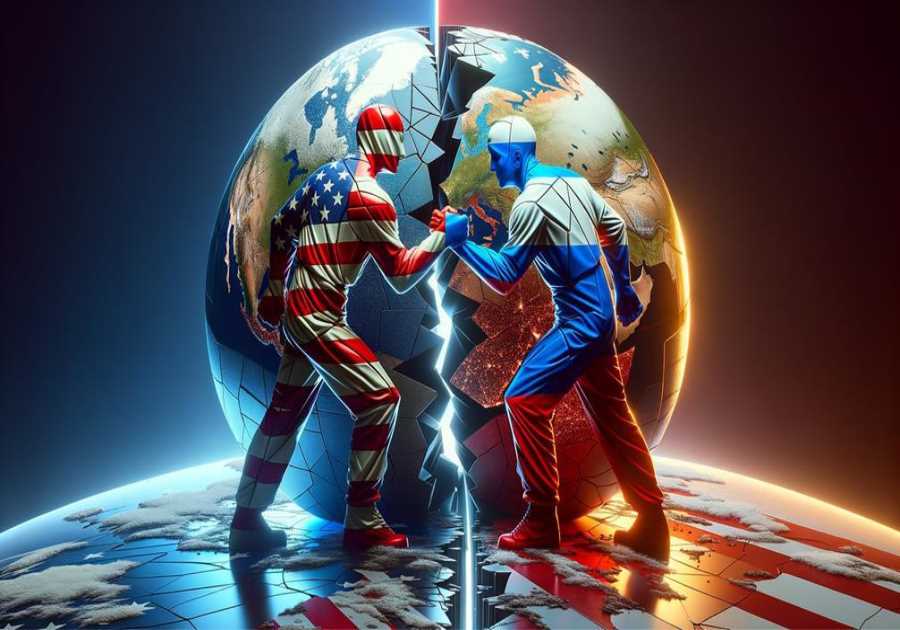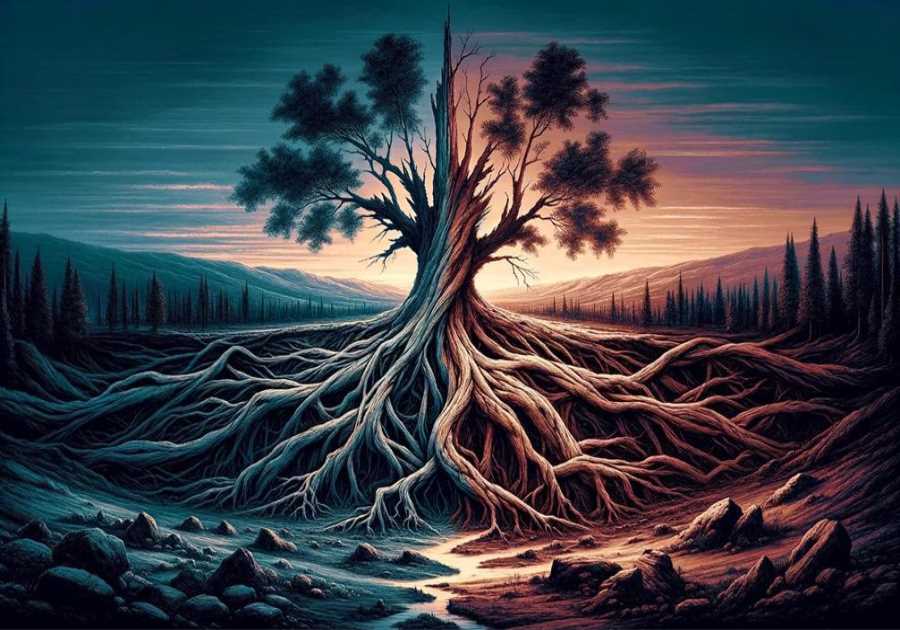Imagine yourself embarking on a journey, not just any trip, but one down the 'Loneliest Road in America.' You start in Baker, Nevada, a tiny town that's your gateway to the awe-inspiring wilderness of Great Basin National Park. As you travel eastward on US-50, you'll find yourself immersed in landscapes where time seems to have stood still. You'll encounter charming old towns like Ely and Eureka, each bursting with tales of the Old West. Your adventure continues through Austin and Sand Mountain Recreation Area before concluding in Carson City. This isn't your typical tourist route; here, solitude is your companion as you navigate vast expanses of untouched nature and remnants of a bygone era. So buckle up and prepare for an unforgettable journey along the loneliest road in America - it's a trip that'll make you appreciate why sometimes, loneliness can be truly beautiful.
Key Takeaways
- The Loneliest Road in America starts in Baker, Nevada, and ends in Carson City, Nevada.
- The road passes through various towns and attractions, including Great Basin National Park, Ely, Eureka, Austin, Fallon, Sand Mountain Recreation Area, Fernley, and Carson City.
- The Loneliest Road offers a unique combination of beauty and isolation, with steep slopes, adrenaline-pumping drops, and the towering sand dune contrast of Sand Mountain Recreation Area.
- Travelers on the Loneliest Road should plan their gas stops, pack food and water, and brush up on survival skills due to the remote nature of the route.
Journey's Starting Point:
You're kickstarting your adventure in Baker, Nevada, a place so small it's almost off the map, but don't let that fool you - it's the beginning of an extraordinary journey on America's loneliest road. Nestled at the base of Great Basin National Park and serving as a gateway to Nevada Highway 50, this hidden gem offers more than meets the eye.
As your journey's starting point: Baker, Nevada is where you'll get a taste of true solitude. It's here you'll feel a deep connection with nature before embarking on the long stretch known as "the loneliest road in America". Packed away from the hustle and bustle of city life, this quaint town has an air so fresh and crisp; it will rejuvenate your senses instantly.
With just one main street lined with rustic buildings and vintage signs, Baker keeps its charm intact. As you set out for your road trip along Nevada highway, remember to soak in these moments—this tranquillity is hard to come by these days.
As you prepare to leave behind this charming little town, anticipation fills your heart. You can't help but look forward to what awaits next – exploring the highlights of Great Basin National Park!
Highlights of
If you're an adventurer, don't miss out on the mesmerizing Lehman Caves and the towering Wheeler Peak in the stunning Great Basin National Park. This jewel of Nevada is a haven for nature lovers, boasting diverse flora and fauna set against breathtaking landscapes.

As you wander through Lehman Caves, your senses will be captivated by the underground marvels. The intricate stalactites hanging from above, impressive stalagmites rising from below, and delicate helictites defying gravity all make it a surreal experience.
Next up is the mighty Wheeler Peak. As you ascend its rugged trails, each step brings another panorama of majestic snow-capped peaks and vast expanses of bristlecone pine forest. Reaching its summit feels like standing on top of the world as you gaze upon miles of untouched wilderness.
Along your journey through Nevada's rolling hills, mountain ranges and valleys, don't forget to visit nearby attractions like the Nevada Northern Railway state park. Hop aboard a century-old steam locomotive for a nostalgic trip back in time before returning to your exploration of Great Basin National Park.
From here on, prepare yourself for some urban charm as we head towards discovering the quaint town of Ely next along state route on this lonely road trip adventure.
Discovering the Town of Ely
Nestled in the heart of Nevada, Ely's a small town with big character that's sure to captivate your senses. As you traverse along the loneliest road in America, Hwy Nevada, you'll find this gem perfectly encapsulating the spirit of historic mining communities. The charm is unmistakable; it envelopes you as soon as you roll into town.
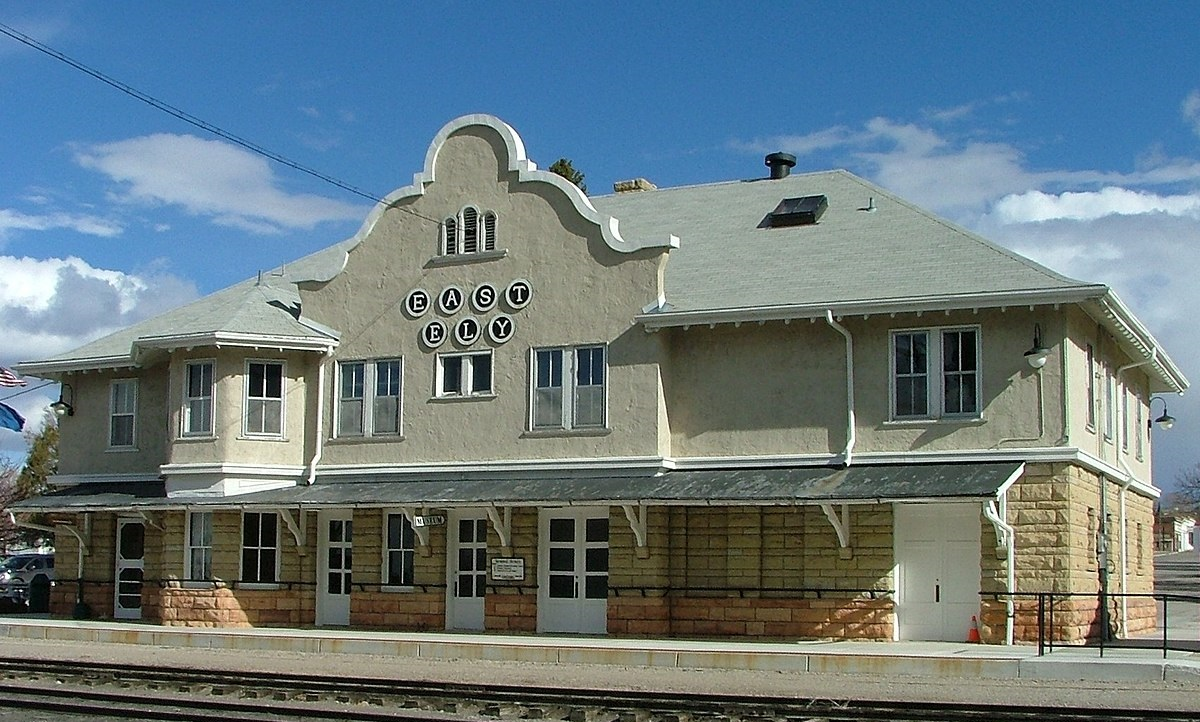
You'd be forgiven for thinking you've stepped back in time. Ely tells a story of resilience and adaptation, from its vintage railway station to the untouched remnants of copper mines that once fueled its economy. It's not just about history, though. This small town is brimming with contemporary delights, too: delectable eateries, an eclectic mix of shops, and friendly locals who're always ready to share a tale or two.
Ely stands proudly on Hwy Nevada, recognized by Nevada officials for its rich heritage and vibrant culture. And yet it remains one of those off-the-beaten-path destinations that rewards those who dare to venture beyond the usual tourist trails.
As your journey through Ely draws to a close, anticipate further excitement as your adventure leads you toward experiencing Eureka's old west charm next on this epic road trip.
Experiencing
Eureka's Old West Charm
As the dust settles on your rearview mirror leaving Ely, it's time to get ready for an immersion into the old west charm of Eureka. Your journey along the loneliest road in America is about to become a trip back in time.
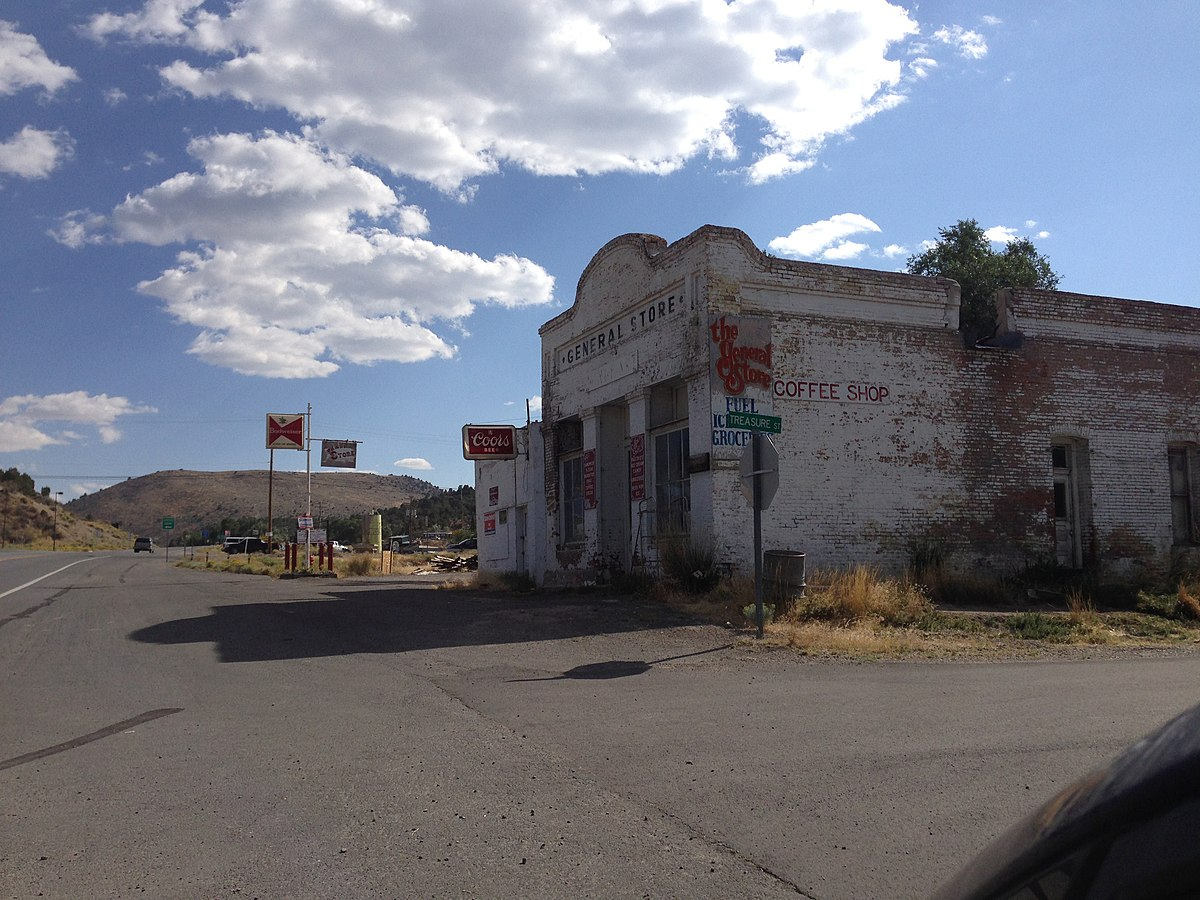
Upon entering this historic town, you will begin experiencing Eureka's old west charm, where echoes from its past as a bustling silver mining town still resonate. Here are four must-see sights to witness:
- The well-preserved Opera House: This relic from the 1880s hosts performances even today.
- The Sentinel Museum: Showcasing artifacts and history of the silver rush era.
- The Jackson House Hotel: A Victorian-era hotel that offers a taste of luxury from yesteryears.
- Raine's Market and Wildlife Museum: A unique combination of grocery store meets wildlife exhibit.
Strolling through Eureka feels like walking through an open-air museum or stepping onto a Western movie set - minus tumbleweeds rolling down Main Street! Despite its ghost town appearance, there's life here that keeps its rich history alive and tangible.
Eager for more? Good thing your journey isn't over yet! The next stop is uncovering history in Austin, Nevada – another gem on this lonely but enchanting road trip!
Uncovering History in Austin, Nevada
You're in for a treat, folks, because Austin, Nevada's got layers of history waiting to be peeled back and savored. As you cruise down the loneliest road in America, there's something almost mystical about this old mining town nestled into the heart of Nevada.
Austin is more than just a pit stop; it's like stepping onto the set of an Old West movie. You can feel a palpable sense of the past here - from its 19th-century churches to Stokes Castle, a three-story stone tower built as a summer home by Anson Phelps Stokes, a prominent mine developer.
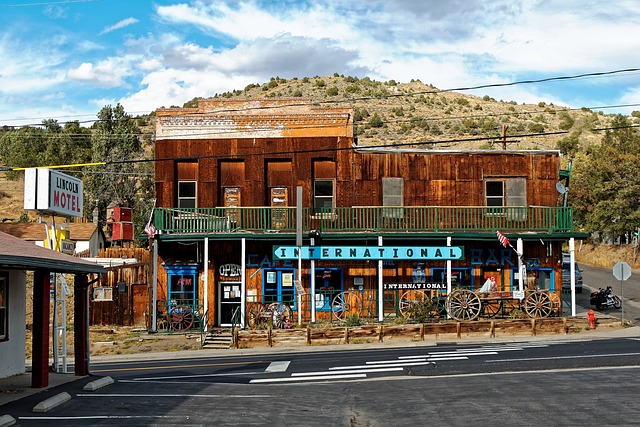
Make sure you take time to stroll around and soak up the atmosphere. The buildings whisper stories of prosperity brought on by silver mining and the eventual decline when resources ran dry. You'll find yourself lost in time as you uncover history embedded deeply within Austin's rustic charm.
Don't forget that Austin was once considered for state capital! This nugget of information adds another layer to your understanding and appreciation for this small but historically rich town.
As you leave behind Austin's historical depth, prepare yourself for a refreshing change – Fallon awaits with its reputation as 'the oasis of Nevada.'
Fallon: The Oasis of Nevada
Ditching Austin's historic dust, we're now headed to the lush, green city of Fallon - often lauded as 'the Oasis of Nevada.' As you journey along the loneliest road in America, the arid landscape of Nevada dramatically gives way to verdant farmland numerous mountain ranges. You can almost feel your senses awaken at the sight of such life amidst vast expanses.

Here are 4 reasons why Fallon is a standout on this road in Nevada:
- The Churchill County Museum & Archives hosts an impressive collection showcasing Fallon's rich agricultural history.
- The Oats Park Art Center: A hub for creativity and culture where artists thrive.
- Lattin Farms: Offering a taste of locally grown produce and homemade treats.
- Grimes Point Archaeological Area: Home to petroglyphs dating back thousands of years.
The Nevada Department proudly touts these attractions, but it's the feeling of community that truly makes Fallon stand out - folks greeting each other by name, children playing freely in parks; it's like stepping back into an idyllic American past.
As you leave this oasis behind, brace yourself for a shift from greenery to grains-of-sand with our next destination - Sand Mountain Recreation Area.
Exploring Sand Mountain Recreation Area
Shifting gears from the green oasis of Fallon, you'll be awe-struck as the landscape transforms into a shimmering sea of sand at Sand Mountain Recreation Area. Nestled in the Nevada portion of your journey along the loneliest road in America, this area provides an exhilarating contrast to the surrounding desert scenery.

As you explore Sand Mountain Recreation Area, every crest of sand feels like conquering a new world. The mountain is a towering 600-foot high dune stretching over two miles long – a challenging climb by foot but a thrilling ride for those on off-road vehicles. Feel your heart race as you navigate steep slopes and adrenaline-pumping drops, with nothing but miles of golden sand stretching out before you.
The echoing silence is occasionally broken by laughter or shouts of excitement from fellow thrill-seekers, reminding you that even in one of America's most remote corners, there's joy to be found.
Heading eastward on your adventure along the loneliest road in America, keep an eye out for another unexpected destination: The intriguing town of Fernley will soon emerge amidst Nevada's barren yet beautiful landscapes.
The Intriguing Town of Fernley
Just around the bend, Fernley awaits, a gem hidden within Nevada's stark beauty, ready to surprise and captivate you with its charm. This intriguing town off the loneliest road in America is more than just a small dot on the map. It's here that Nevada officials seized an opportunity to create something truly unique.
- The main route through Fernley takes you past quaint shops and charming houses with well-tended yards.
- As you stroll through the town center, small-town life unfolds before your eyes: kids playing in parks, locals chatting over coffee at cozy cafés.
- At nightfall, the streets of Fernley come alive with twinkling lights lending an ethereal glow to this remote outpost.
Despite its modest size, Fernley hums with activity. From rodeos and county fairs in summer to ice-skating rinks in winter—there's always something happening here! It's hard not to fall for this vibrant community that has somehow retained its old-world charm while embracing modernity with open arms.

The Loneliest Road adventure continues as you leave behind the bright lights of Fernley and set course for Carson City. You might think that nothing can surpass this experience but wait until we get there!
Reaching the End: Carson City
As you approach the final stretch of your journey, you'll find Carson City waiting to greet you with a rich tapestry of history and culture that's sure to captivate your spirit. Nestled in the heart of western Nevada, this charming city is more than just another spot along the Loneliest Road in America; it's a testament to resilience and perseverance.
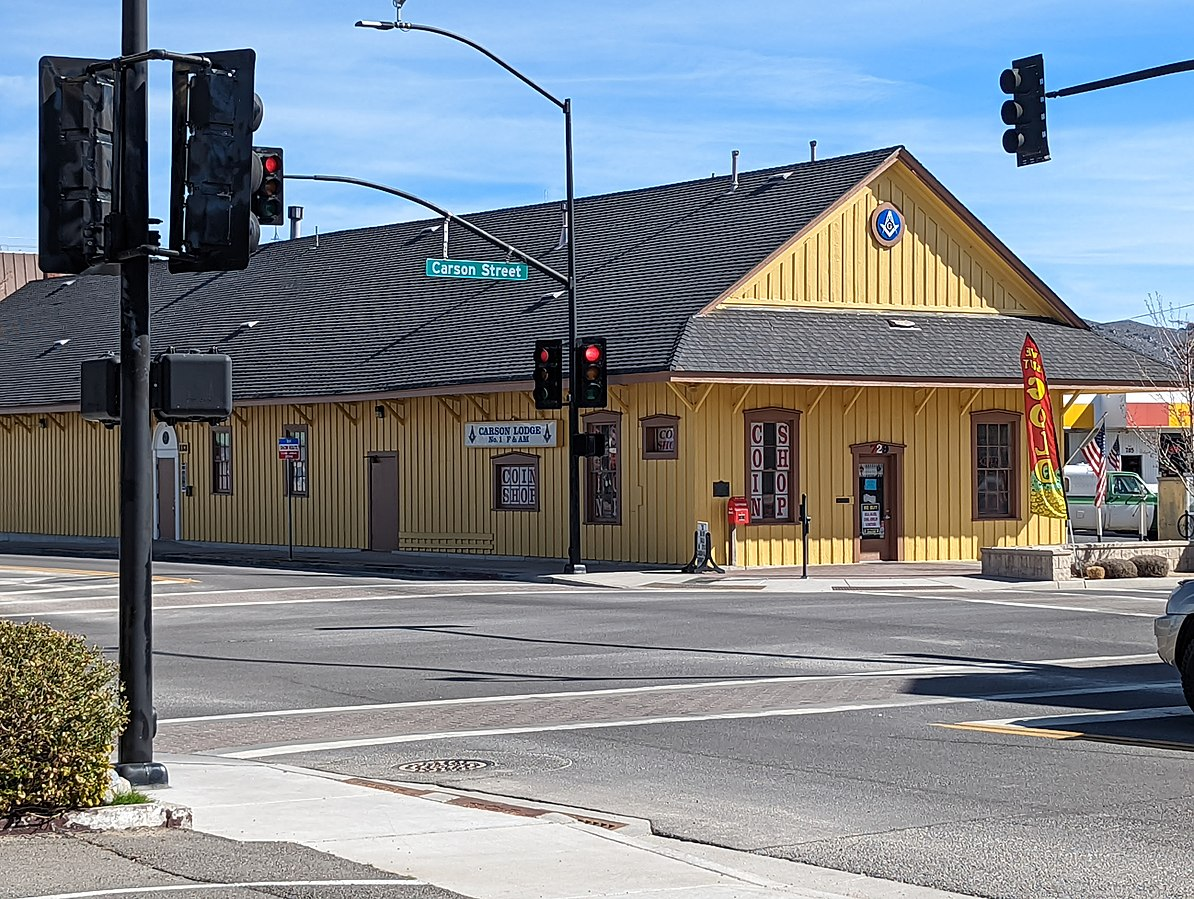
The very air seems to hum with stories as you follow the path carved by countless travelers before you, reaching the end of an unforgettable expedition. Here, every corner echoes tales from yesteryears - whispers of silver mining boomtowns, ghost towns and Wild West legends seem almost tangible against the backdrop of stately Victorian-era architecture. You can't help but feel a sense of awe at how beautifully preserved these testaments to time are.
Don't be surprised if Carson City steals a part of your heart; its allure is subtle yet irresistible. As your next city on this epic road trip, it serves as a gentle reminder that even on roads less traveled, there are gems waiting to be discovered.
Before setting out on your next adventure, though, let's equip ourselves better for what lies ahead – because knowing what gear or knowledge might come in handy can make all the difference!
Preparing for the Trip: Essential Tips and Advice
Now, let's dive into some essential pointers that'll ensure your journey on the loneliest road in America is not just smooth, but also fruitful. Preparing for the trip isn't something to be taken lightly – this is no ordinary road trip.
- Plan your gas stops: Gas stations are few and far between on this remote terrain. Running out of fuel here would certainly make it a more lonely experience than you'd like.
- Pack plenty of food and water: Restaurants are scarce as well. Stock up with enough provisions to last you a couple of days longer than your planned trip duration.
- Brush up on survival skills: A breakdown could leave you stranded for hours, maybe even overnight. Knowing basic first aid and how to signal for help can be lifesavers.
- Check your vehicle thoroughly: Ensure that tires, engine, lights - everything's in top-notch condition before you set off.
For those who come prepared, the loneliest road in America offers an unforgettable experience – stark landscapes under immense skies by day turn into stargazing paradise at night. So pack wisely, drive carefully and embrace the solitude! The road awaits with its unique blend of beauty and isolation.
Frequently Asked Questions
Is there any public transportation available along the 'Loneliest Road In America'?
Imagine yourself on the open road, surrounded by vast stretches of untouched nature. You're on America's Loneliest Road, a place where solitude is your constant companion. Unfortunately, there's no public transportation to break this isolation. Your own wheels or hitchhiking are the only ways to traverse this starkly beautiful expanse. So pack up your car or strap on your boots - it's time for a journey that you'll remember for its breathtaking loneliness and raw natural beauty.
What is the best season to travel the 'Loneliest Road In America'?
The best time to hit the 'loneliest road in America'? That's a summer adventure, my friend. The weather is perfect for driving, with clear skies and warm temperatures. You'll witness nature blooming, adding life to its solitude. But remember, it gets pretty hot during the day, so pack plenty of water. The nights? They're magical! Clear starry skies make for unforgettable camping experiences. Trust me, you won't regret this summer journey!
Are there any guided tours available for the 'Loneliest Road In America' journey?
Absolutely! Guided tour options exist for the 'loneliest road in America' journey. You can immerse yourself in the hauntingly beautiful landscapes, hear tales of old mining towns and interact with local characters. Some tours even include off-road adventures or visits to nearby national parks. Remember, though it's called 'loneliest,' you'll never feel alone with a knowledgeable guide leading the way, sharing secrets this historic route has tucked away over centuries.
What unique flora and fauna can be seen while traveling the 'Loneliest Road In America'?
As you traverse the 'loneliest road in America', you'll encounter an array of unique flora and fauna. You can spot sagebrush, pinon pine, juniper trees, and wildflowers, adding colors to your journey. If you're lucky, keep an eye out for wildlife like pronghorn antelope, desert bighorn sheep, coyotes, and even mountain lions. Birdwatchers will delight in spotting hawks, owls, and eagles soaring above. Each sighting brings a thrilling sense of discovery on this less-beaten path.
How has the 'Loneliest Road In America' influenced popular culture or literature?
You might not expect it, but the 'loneliest road in America' has left a mark on pop culture and literature. It's inspired by songs like "A Hundred Miles of Nothing" by Lacy J Dalton. In literature, it's featured in books like "Blue Highways" by William Least Heat-Moon. This desolate stretch is often used as a symbol of isolation or endurance, influencing narratives with its haunting beauty and stark landscapes that can't help but leave an impression.
Frequently Asked Questions
What is the greatest achievement of human history?
You can make a significant impact on the world by doing something that is positive and changes lives. When you create something entirely new that wasn't there before.
Great achievement doesn't depend on how much money or how many people helped you. It is measured by how much of an impact you had on this world.
These are not the greatest achievements. We already know how to find the answer. It is the ones that change how we view life that are the greatest achievements. It changed our perspective.
Small achievements can often be overlooked because they occur slowly and quietly. They may seem insignificant at the time. However, they will have a lasting impact on your life.
There are two types, one lasting forever and one that fades. Greatness that lasts for generations is created by making something people love and treasure over time.
Because people admire great accomplishments more when they don’t know the source, it’s often done anonymously.
But great achievements fade away quickly. You might not believe what someone tells about them. This is because you're used to considering greatness permanent.
Because greatness fades away so easily, it's easy to lose sight of its importance. Therefore, great achievements are rare. It is rare that anyone ever achieves them.
What is the greatest achievement in science?
We've come a long way since we figured out how to harness fire for heat. But there's still much to do.
Scientists who have an idea and work towards making it a reality have made some of the greatest scientific discoveries. Science is often driven by curiosity.
Sometimes, though, it takes more to break through than curiosity. Sometimes, you must have a goal. A vision. An ideal goal.
Persisting with an idea is what I believe has led to the greatest scientific achievements.
They would look for ways to turn their ideas into reality, even if those realities weren't entirely clear at the time.
This requires that you think big, take risks, make mistakes, learn from them, and be bold.
The most important thing to remember is that success doesn't necessarily mean failure. All that matters most is that you tried.
It is important to find a way that you can keep going, despite failures, criticism, rejection, or setbacks. As long as you keep trying, you'll eventually reach success.
Don't stress about the outcome. Just try to do good work along the way.
What were the greatest human achievements in the past five decades?
One of the most significant achievements in humanity's history over the past 50 years has been our ability to communicate quickly and accurately across large distances. This is without doubt, the most significant technological innovation in human history.
The internet is a network of tubes that connects the world. These tubes are made from fiber optic cables. Each cable can transmit information at up to 10 gigabits per second - more than 1 million times faster than the average home broadband connection today.
This technology allows us all to exchange ideas, knowledge, culture, and information across the globe. This technology has made it possible to access any information immediately, instead of having to physically travel to another place.
It is also the reason for amazing advancements in medicine and science. Scientists can sequence genomes in fractions of the time it took twenty years ago.
In addition, technological advances mean that researchers can simulate complex biological processes in real time. This means that we can finally unlock the secrets of diseases like Parkinson’s, Alzheimer’s, and cancer.
These breakthroughs could save millions.
However, there is a downside to this amazing technology. We have become increasingly dependent on the internet in recent years for our daily activities. This reliance has led to several problems, including cyberbullying, online scams, and identity theft.
The problem might be even worse. The risk of a global digital meltdown is increasing as more people rely on the internet.
As we become more dependent on the internet, so does our vulnerability. If the internet goes down, even for a few minutes, businesses could lose billions in productivity. Our financial transactions, health records, and government communications could all be compromised.
We're already seeing early signs of what might happen if the internet fails. Take a look back at Hurricane Sandy, which knocked out power supply to many homes and businesses across the eastern United States. Hackers used the internet outage to steal credit cards numbers within days.
Look around your house and you will see many devices connected via the internet. Amazon can be connected to your fridge so you can order food online. Your car will be able to check traffic conditions, and even book service appointments. Even your lights are able to be remotely turned off. All these things are possible thanks to microprocessors embedded in them. This allows them to communicate via the internet with each other.
These microprocessors weren't able to transmit data between their networks when Hurricane Sandy struck East Coast. This meant that cars could not start or stop engines, refrigerators couldn't order food and lights couldn’t turn off. It caused chaos and confusion in an emergency.
The same thing could happen during a national disaster like a natural catastrophe or terrorist attack. Imagine how difficult it is for police officers and paramedics to respond to emergencies or crimes. How would hospitals manage patient services without computers? How about communication between citizens, government agencies and each other?
Good news: The infrastructure to prevent this kind of thing from happening is already in existence. Critical services such as water treatment plants and power plants are already designed to withstand storms similar to hurricanes. However, they are not designed to withstand a massive cyberattack that could cause a loss of all electricity.
If hackers took over a nuclear station, they could shut it down in just seconds. They could also cause panic by contaminating the water supply.
So while the infrastructure exists, the question remains: will we ever get serious about building resilience into the system?
Two scientists from MIT wrote a paper titled "A Failure Model of Cloud Computing" in 2005. They proposed a future that has no single point or failure. Every device has many points of failure. Imagine your smartphone losing its battery and your laptop both. You will now need to replace both your phone AND computer.
In the past, we've been able to rely on a few key components like electrical grids and telephone lines to keep us safe. But as more people move towards cloud-based computing, we're putting more of our lives online. We rely on technology that hasn't been tested in real-world environments. It's important that we do this to ensure that our technologies are resilient enough in the face of disasters like massive cyberattacks and hurricanes.
It's this reason that I'm so excited about work done by National Institute of Standards and Technology. NIST is working with industry experts to develop standards to help us build resiliency into our technology. These standards will ensure everything is seamlessly integrated online. Our phones can still function even when the power goes off. Our refrigerators still order us dinner. Our traffic reports continue to tell us the roads are clear.
And by ensuring our devices can communicate, we'll be better prepared for any event.
What are the Top 5 innovations in human history?
Fire was the most significant innovation in human history. Fire has changed the course of our relationship to nature. It allowed us the ability to heat and cook in frigid weather. It allowed us to control light and heat as well as electricity.
Fire was the catalyst for creating tools, weapons and cities.
Fire allowed us humans to become more intelligent. We could now communicate better, we could learn faster, and we could travel farther.
Inventions such as writing, printing, and gunpowder followed shortly after. These inventions made it much easier for information to be shared.
These technological advances brought about social changes. People started living together in groups for protection, safety, and comfort.
Human beings began to congregate into larger communities and eventually nations. This led eventually to the development laws, government, and religions.
Finally, medicine and sanitation became widespread. These advances led to the rise of middle class.
All these inventions created a place where humanity can thrive. Humanity had finally escaped from the cave.
Technology is changing the world today. New technologies are constantly being developed to make life easier, more secure, and more convenient.
We have made great strides, but we still face many challenges. One of them is climate.
Climate change is the result of burning fossil fuels. Burning fossil fuels such as oil, coal and gas releases carbon dioxide into our atmosphere.
Carbon dioxide traps heat near the Earth's surface, causing temperatures to rise.
This causes the glaciers to melt and then leads to an increase in sea level. Coral reefs will die as the oceans warm.
This makes coastal areas uninhabitable.
As a result, millions of people have been forced to leave their homes. Many countries have declared war against climate change.
Despite all this, it is impossible to stop developing new technologies. Why not! Because if we do, we won't survive.
What were the greatest inventions in early human history?
Think of the most important invention in human history. Imagine an inventor who created a device to allow us all to do the same thing, but for many more people.
What would it look to be like? How could we make it better? Could it truly change the world? What would your approach be if you were given the chance to design such a device.
Answering these questions will help to determine where innovation begins.
Innovation is the ability of solving problems in novel and practical ways. Innovation is key to solving any problem. Innovation means creating something new.
Let's examine the difference between inventions and innovations. Invention refers to the creation of something new. Innovation is when something is improved upon. For instance, the wheel was first invented long before it was improved through the creation and use of the bicycle.
Both innovations and inventions require imagination and creativity. Both require different skills. A true innovator is able see beyond what others cannot. They can spot problems, think outside their box, and discover solutions.
An investor can envision possibilities. Investors can transform a concept into a reality. They can understand and explain their ideas so that others can follow them.
Innovation requires imagination. It requires being creative. It takes creativity.
Investors must be open to new ideas. To step out of their comfort zone. To be challenged to discover new solutions.
A good inventor understands that the best solution isn't always the easiest. Sometimes, finding the right question is the hardest part.
An inventor does more than just solve a problem. They want to improve something. They want to do it better.
You have two options when it comes to your next invention.
- You can either create something new.
- You can improve upon what is already there.
If you choose to improve, you should know that the first step is defining a problem. The next step is to determine if another person has solved the problem.
Sometimes the problem you are trying fix is no more valid. It has changed over time. This is obsolescence.
Another reason innovation fails is market saturation. Too many products are available for consumers to purchase. The demand for a product therefore is low.
You should therefore focus your efforts on niche markets and industries. These are areas of growth.
But, don't forget that the market might not be ready yet for your product. This is why it is important to test your product. It's worth testing. See if people want it.
Last but not least, consider whether or not your idea is worth considering. Are you truly innovating? Does it add value to something already working?
Innovation requires you to get out of your comfort zone. You must push yourself to think outside the box. You should be open to learning more about the topic.
You should always be open to new ideas. You should also be willing to make mistakes.
The only way to discover what is possible is to fail. Failure will teach success.
Why is fire considered to be the greatest achievement for humanity?
Fire is a powerful force of nature, and a symbol for power and energy. Our culture holds fire so high that we give names to days of week based on the amount of fire in them. Tuesday is an example of a "fire-day" day because it marks the time when the sun sets.
The symbol of fire can be used to denote more than heat. Fire can be used to symbolize strength, power, passion and action. So why do we consider fire as the greatest accomplishment for man?
Fire is the most powerful element within the universe. It is the beginning and ending, source and destination.
The best thing about fire is not just its ability to provide warmth or light. Fire is used by humans to make art, heat, cook, study, and lighten their lives.
We also use fire for destruction - burning coal to create electricity or destroying trees. You can use fire to kill animals or to help you communicate.
Although fire might seem to be a dangerous element, it's not. Instead, it's quite beneficial to us. It helps us survive, protect ourselves and provides entertainment.
Statistics
- With the sequencing of both the human and chimpanzee genome, as of 2012, estimates of the similarity between their DNA sequences range between 95% and 99%. (en.wikipedia.org)
- Retrieved April 26, 2015. Sequence differences from the human genome were confirmed to be ∼1% in areas that can be precisely aligned, representing ∼35 million single base-pair differences. (en.wikipedia.org)
- Some 45 million nucleotides of insertions and deletions unique to each lineage were also discovered, making the actual difference between the two genomes ∼4%. (en.wikipedia.org)
- dating of two H.nalediteeth, to 253+82−70 ka, for an estimated age of the fossils of 253+82−17 ka. (en.wikipedia.org)
- Also proposed as Homo sapiens heidelbergensis or Homo sapiens paleohungaricus.[208]H. rhodesiensis, and the Gawis cranium[edit]H. rhodesiensis, estimated to be 300,000–125,000 years old. (en.wikipedia.org)
External Links
doi.org
- Evolutionary Biology: The Hybrid Origin of "Modern Humans"
- ScienceDirect: Mosaic humans, a hybrid species
britannica.com
livescience.com
nytimes.com
- Grappling with the Price of Saving Earth's Oxygen (Published 1990).
- For Evolving Brains, a Paleo Diet of Carbs – The New York Times
How To
What are the ten most significant inventions?
There are thousands upon thousands of inventions each year.
These are just some of the ideas we've come across.
The list below is incomplete because it includes only those inventions for which patent protection has been granted.
This does not include inventions that were patented but have not been published.
These are some examples of inventions that have been published, but not protected by patents:
- Technology can now be used for new purposes (e.g. efficiency improvements in existing processes).
- Improvements to manufacturing methods (e.g., improved methods of casting, molding, extruding, forming, machining, etc.)
- Novel ways of applying known technology (e.g., using a computer to solve problems that previously required human intervention).
Here are the Top 10 Patentable Inventions According to the U.S. Patent Office.
- Sewing Machine - Elias Howe
- Refrigerator - Charles F. Lindberg
- Stove - Richard Cobden & John Richardson
- Alexander Graham Bell Telephone
- Radio - Guglielmo Marconi
- Television - Philo Farnsworth
- Nikola Tesla Electric Motor
- Airplane - Samuel Pierpont Langley
- Steam Engine - James Watt
- Computers - Alan Turing
Did you miss our previous article...
https://lessonsbeyondthestory.com/history-of-man/blood-ties-mobsters-and-mormons

